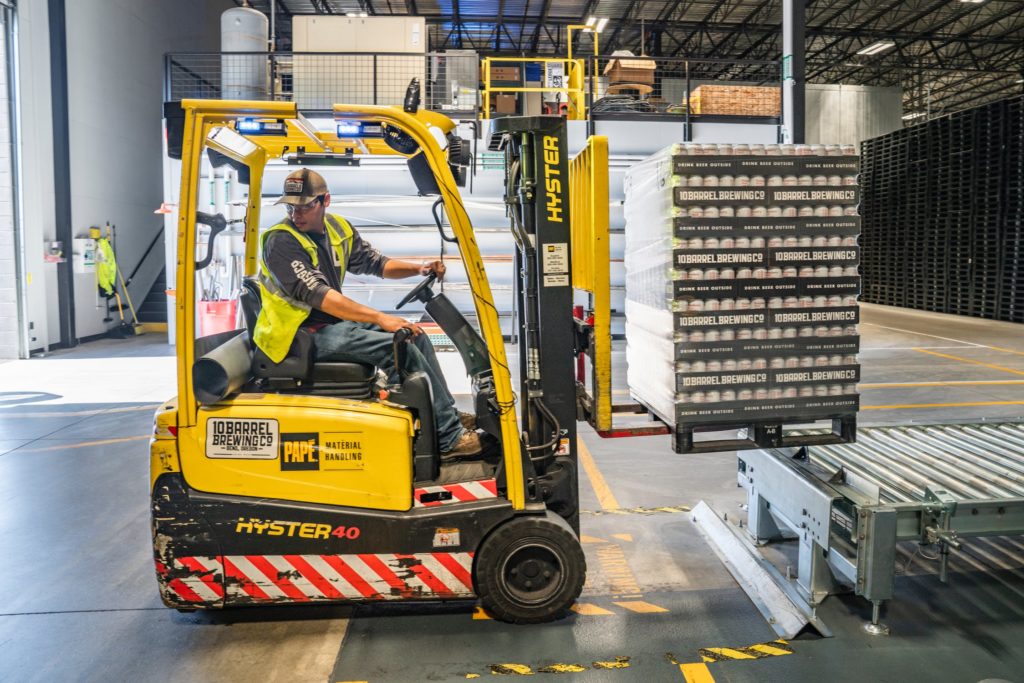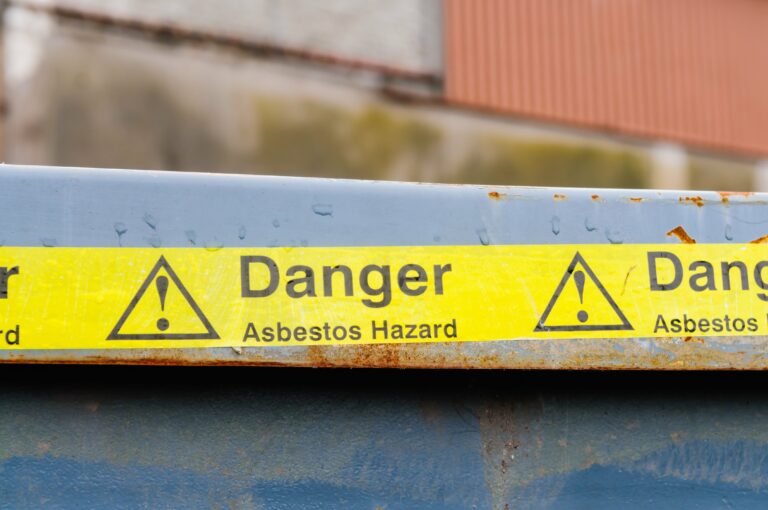Every year, over 5,000 accidents involve transport in the workplace. Main causes of injury are people falling off vehicles, or being crushed or struck by them.
In fact, Health and Safety Executive (HSE) fatality figures for the five-year period 2014/15-2018/19 reveal that:

- Being struck by a moving vehicle accounted for 19% of all fatalities – an average of 27 fatal injuries per year.
- 20% of deaths from being struck by a moving vehicle occurred in the transportation and storage sector – an average of five per year.
Additionally, non-fatal injury figures for the three-year period between 2016/17 and 2018/19 show that being struck by moving vehicles accounted for 4% of the 448,000 over seven-day absences from work – some 17,900 workers.
A new statistic: Worker's foot crushed under forklift
In a recent case, a haulage company has been fined after a warehouse operative was knocked to the ground by a forklift. Before the vehicle came to a stop, the worker’s foot became trapped under a wheel, breaking bones in his foot.
An investigation by the HSE found that the haulier:
- Had neglected to put in place appropriate systems to ensure vehicles and pedestrians moved around the warehouse in a safe manner.
- Failed to factor recent changes to the warehouse’s layout into its risk assessment.
- Relied on its warehouse team working safely with each other without effective training and supervision.
Foulger Transport Limited, part of the Kinaxia Logistics group of companies, pleaded guilty to breaching the Workplace (Health, Safety and Welfare) Regulations 1992. It was fined £20,000 and ordered to pay costs of £5,724.
HSE

Employers’ duties
All employers have a legal duty to make sure that their activities do not pose a risk to the health and safety of employees and others.
In managing transport in your workplace, the law states that you must organise your site so that vehicles and pedestrians can move around safely.
More specifically, this means:
- Your workplace must be safe for the people and vehicles using it.
- Workplace traffic routes must be suitable for the people and vehicles using them – in suitable positions and enough in number and size.
- Where vehicles and pedestrians share a traffic route, there must be enough separation between them.
Most vehicle incidents result from poor separation of pedestrians and vehicles. The HSE stresses that such accidents can and should be prevented by effective segregation.
Top tips for safe traffic management
The first step to minimising vehicle risk in your workplace is to conduct a risk assessment to identify what could go wrong and then implement suitable control measures. Think about how people could come into contact with a moving vehicle and the tasks that might bring them into contact with vehicles.
Plan the route that vehicles and pedestrians should take carefully. The following will help to keep them apart:
Entrances and exits. Have separate entry and exit gateways for pedestrians and vehicles.
Walkways. Where possible, make sure walkways take a direct route.
Signs and instructions. Make sure all drivers and pedestrians know and understand the routes and traffic rules on site. Use standard road signs where appropriate.
Crossings. Where walkways cross roadways, provide a clearly-signed, well-lit crossing point where pedestrians and drivers can clearly see each other.
Obstructions. Do not block walkways in a way that forces pedestrians to have to step onto vehicle routes.
Barriers. Consider installing a physical barrier between roadways and walkways.
One-way systems. Wherever possible, make the flow of traffic one-way as this can reduce risk, especially in storage areas.
Reversing. Avoid the need for vehicles to reverse where possible. Consider installing a turning circle to allow vehicles to turn without reversing.
If vehicles reverse in areas where pedestrians cannot be excluded, the risk is elevated and visibility is critical. Consider:
Aids for drivers. Mirrors, CCTV or reversing alarms can help.
Signallers. Who can be appointed to control manoeuvres and is trained in the task.
Lighting. So that drivers and pedestrians on shared routes can see each other more easily. Lighting may be needed after sunset or in bad weather.
Clothing. Pedestrians on site should wear high-visibility clothing
Incidents also occur when untrained or inexperienced workers drive vehicles without authority. Make sure all workers are fit and competent to operate the vehicles they use on site by, for example:
Checks when recruiting drivers/operators or hiring contractors.
Training drivers and operators.
Managing the activities of visiting drivers. Make sure contractors are aware of the dangers. Discuss risk assessment findings with them before they start work on site.
Vehicle numbers should be kept to a minimum. This can be done by:
Controlling entry to the work area. Only allow designated vehicles on site.
Planning storage areas so that delivery drivers do not have to cross the site.
Providing parking for the workforce and visitors away from the work area.
The HSE has provided a brief guide on workplace transport safety, INDG199.
Let us be one of your legally-required competent persons
Ellis Whittam supports thousands of UK employers with all aspects of compliance through the provision of named, highly-qualified Health & Safety Consultants. If you require hands-on assistance with everything from on-site risk assessments to developing robust policies and procedures, we will work with you to elevate your current practices so that you’re not left exposed.








